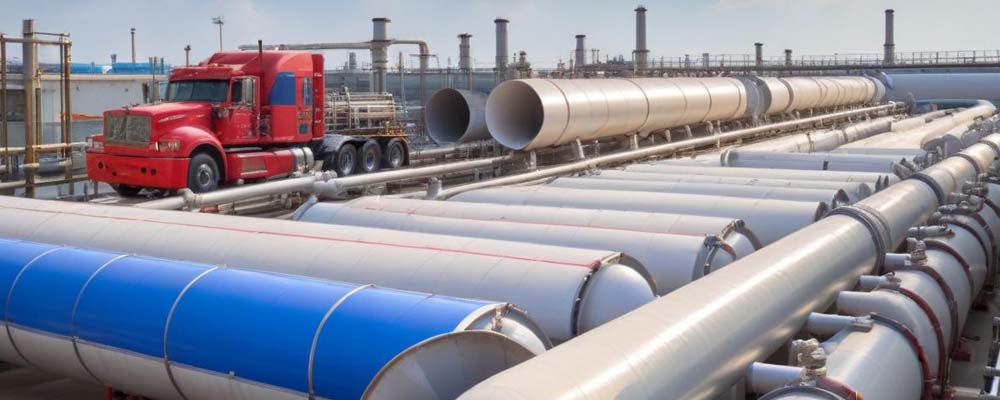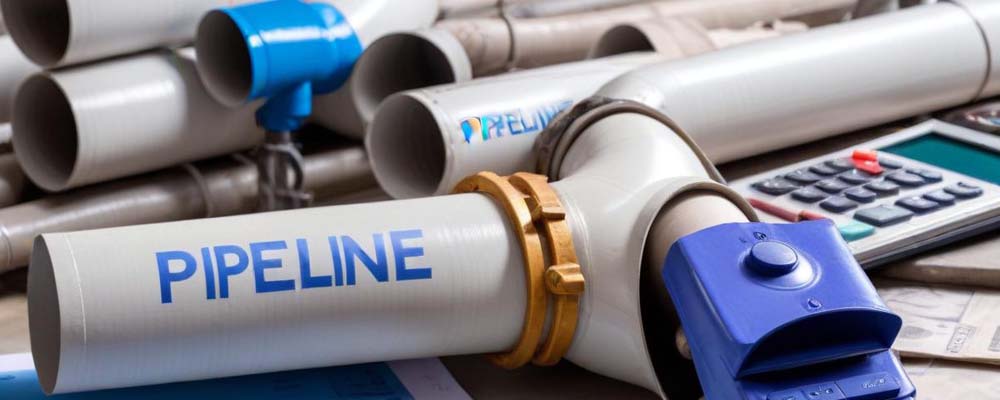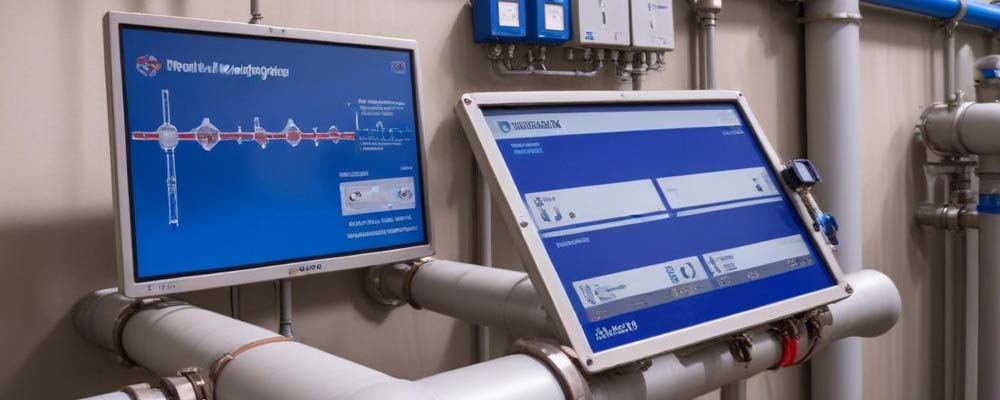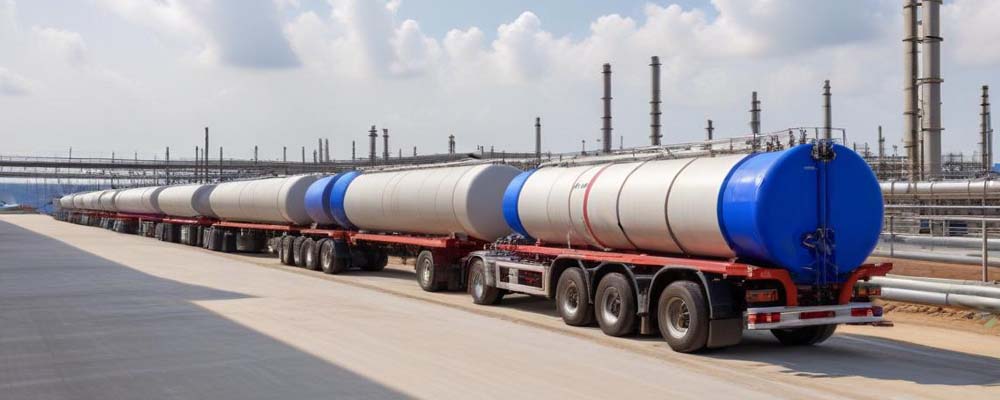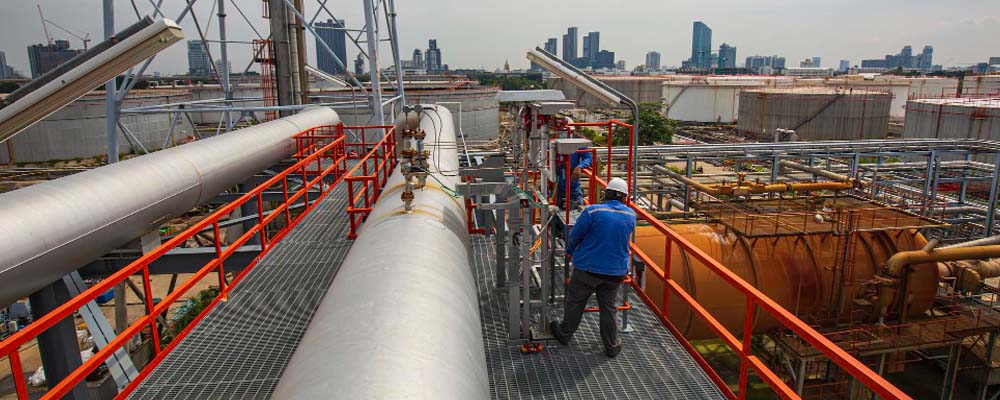
In the complex world of logistics and shipping, understanding the ins and outs of pipeline transport can give you a significant edge. We’ll explain the pipeline transport shipment process, exploring everything from the basic concepts to cost calculations. Let’s dive in and discover how pipeline transport can revolutionize your logistics strategy.
What is Pipeline Transport?
Pipeline transport is a method of transporting goods through pipelines. It’s mainly used for liquids and gases, such as oil, natural gas, and water, but can also be used for other materials. This method ensures a continuous flow of materials over long distances, which can be more efficient than other transportation modes.
Pipelines are buried underground or laid on the sea bed, making them less visible and less prone to weather disruptions. They offer a stable and reliable means of transport, especially for bulk commodities.
Understanding pipeline transport is crucial for logistics professionals because it offers a unique blend of efficiency, reliability, and cost-effectiveness.
Types of Pipelines Used in Transportation
There are several types of pipelines used in the transportation industry. The most common types include:
- Transmission Pipelines: These are large pipelines that transport liquids or gases over long distances, often crossing state or even national borders.
- Distribution Pipelines: Smaller pipelines that carry materials from transmission pipelines to end-users.
- Gathering Pipelines: These collect products from various sources and transport them to a central location for processing or transmission.
Each type of pipeline serves a specific purpose and is designed to meet the needs of different segments of the supply chain.
Key Components of a Pipeline System
A pipeline system is composed of several key components that work together to ensure smooth transportation. These components include:
- Pipes: The main conduits that carry the materials.
- Pump Stations: These stations help maintain the pressure required to move the materials through the pipelines.
- Compressor Stations: Similar to pump stations, these are used in gas pipelines to keep the gas pressurized.
- Valves and Control Systems: These components regulate the flow and pressure of the transported materials, ensuring safety and efficiency.
Understanding these components helps logistics professionals assess the reliability and efficiency of pipeline transport systems.
Advantages of Pipeline Transport
Pipeline transport offers numerous advantages that make it a popular choice in the logistics industry:
- Cost-Effective: Once the initial investment in pipeline infrastructure is made, the operational costs are relatively low.
- Reliable: Pipelines operate continuously, providing a steady stream of materials without the delays often associated with other transportation methods.
- Environmentally Friendly: Pipelines have a smaller carbon footprint compared to trucks and ships, making them a greener option for transporting large quantities of materials.
Pipeline Transport Shipment Process
Planning and Scheduling
The shipment process begins with careful planning and scheduling. This involves coordinating with suppliers, customers, and other stakeholders to determine the volume and timing of shipments.
Effective planning ensures that the pipeline operates at optimal capacity, minimizing delays and maximizing efficiency.
Loading and Transporting
Once the planning is complete, the materials are loaded into the pipeline. This involves using pumps or compressors to move the materials through the pipes.
Throughout the transportation process, monitoring systems track the movement of materials, ensuring that everything flows smoothly and safely.
Unloading and Delivery
Upon reaching the destination, the materials are unloaded from the pipeline. This may involve transferring the materials to storage tanks, trucks, or other transportation modes.
Timely unloading and delivery are crucial to meet customer demands and maintain the integrity of the materials being transported.
How Is Pipeline Transport Cost Calculated?
Fixed Costs
Fixed costs include expenses that remain constant regardless of the volume of materials transported. These costs typically cover infrastructure, maintenance, and regulatory compliance.
For example, the cost of building the pipeline and installing monitoring systems falls under fixed costs. These expenses are incurred upfront and remain relatively stable over time.
Variable Costs
Variable costs fluctuate based on the volume of materials transported. These costs include energy consumption, labor, and maintenance activities.
For instance, the energy required to pump liquids or compress gases varies with the amount of material being transported. Variable costs can be managed by optimizing the pipeline’s operation.
Cost per Unit
The cost per unit is calculated by dividing the total costs by the volume of materials transported. This metric helps businesses determine the efficiency and cost-effectiveness of their pipeline transport operations.
By analyzing the cost per unit, businesses can identify areas for improvement and make informed decisions about their transportation strategies.
Sample Cost Computation
To illustrate how pipeline transport costs are calculated, let’s consider a hypothetical scenario. Suppose a company needs to transport 1,000 barrels of oil through a pipeline.
Fixed Costs
- Infrastructure and installation: $1,000,000
- Annual maintenance and regulatory compliance: $50,000
Variable Costs
- Energy consumption per barrel: $0.50
- Labor costs per barrel: $0.20
Total Costs
- Total fixed costs (annual): $1,050,000
- Total variable costs (per shipment): $700 (1,000 barrels * $0.70)
Cost per Unit
- Total annual costs (fixed + variable): $1,050,700
- Cost per barrel (annual): $1.05 ($1,050,700 / 1,000 barrels)
By understanding these cost components, businesses can better manage their pipeline transport operations and optimize their expenses.
The Role of Technology in Pipeline Transport
Technology plays a vital role in enhancing the efficiency and safety of pipeline transport. Innovations such as:
- Real-time Monitoring Systems: These systems use sensors to monitor the flow and pressure of materials, detecting any anomalies that could indicate a leak or other issue.
- Automated Control Systems: These systems allow for precise control of the pipeline operations, adjusting flow rates and pressures as needed.
- Predictive Maintenance Tools: Using data analytics, these tools can predict when maintenance is needed, reducing downtime and preventing costly repairs.
Regulatory Framework for Pipeline Transport
Navigating the regulatory landscape is a critical aspect of pipeline transport. Regulations can vary significantly by region and involve multiple governmental agencies. Key regulatory considerations include:
- Environmental Impact Assessments: Before constructing a pipeline, companies must conduct thorough assessments to evaluate the potential environmental impact.
- Safety Standards: Pipelines must adhere to strict safety standards to prevent leaks and ensure the safe transport of materials.
- Licensing and Permits: Obtaining the necessary licenses and permits is a complex process that requires detailed documentation and compliance with various regulations.
Conclusion
Pipeline transport is a critical component of modern logistics and supply chain management. Its cost-effectiveness, reliability, and environmental benefits make it an attractive option for transporting large quantities of materials. However, it also comes with challenges that require careful planning and technological innovation. By understanding the intricacies of pipeline transport, logistics professionals can optimize their operations and stay ahead in a competitive market.




